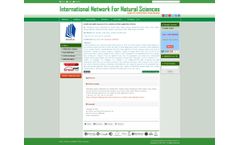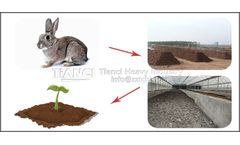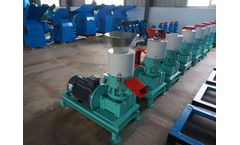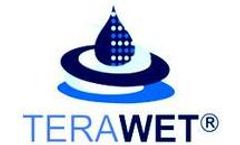Productivity Of Rice Articles & Analysis
68 articles found
Rice husk, an abundant agricultural by-product, holds significant potential for sustainable recycling initiatives. ...
This may be a costly endeavor which may cut in the profits of any business that may be harvesting rice. However, if you could convert this product into something different, you might be able to spend less. ...
” Planning and resource allocation for the progress of the agricultural sector mainly rely on data on crop area, yield, and production. The planners and policymakers are incharge of formulating effective agricultural policies and making critical decisions on procurement, storage, public distribution, import, export, and other similar matters rely on accurate and timely ...
Achieve the effect of increasing production, saving energy, and reducing the labor intensity of workers. ...
Notably, they produce prominent productions like rice and palm oil. Each region's most scenic coastline is subjected to the country's broadest range of geographical hazards. ...
The production declined due to a decrease in area cultivated, dry weather, shortage of water, delayed sowing, low plant population, imbalance fertilizer use, and disease attack especially rice blast and bacterial leaf blight (Chaudhary et al., 2009). ...
Compared with other organic fertilizers, the application of rabbit manure can increase wheat yield by 30% and rice yield by 20% - 28%. Treatment of rabbit manure as organic fertilizer First of all, composting the rabbit manure, the decomposed rabbit manure as organic fertilizer is fluffy and odorless, which greatly improves the environmental pollution. ...
When formulating the diet, the amount of corn generally accounts for 40% to 70% of the diet. 2. broken rice: It is the broken grain rice screened in rice processing. The starch content is high, the crude fiber content is low, and it is easy to digest. ...
Irrigation is essential to increase food production. However, competing needs and increasing drought makes water for irrigation scarce. Therefore, new methods and strategies are continuously being tested by scientists to improve food production, accompanied by better water use efficiency. This article will examine how modern field tools are helping in this ...
Many of them did; some of them didn’t. In the rice contest, most farmers used multiple-inlet rice irrigation and alternate wetting and drying. About half the fields were furrow irrigated; the other half used alternate wetting and drying. Furrow irrigation is a production system for rice that has become more popular in ...
This week’s announcement of a partnership between Anheuser-Busch and Indigo to bring sustainably grown rice to beer sold worldwide is an excellent example of that last method. The supply agreement brings over two million bushels of sustainably produced rice to the country’s leading brewer, enabling growers to engage in regenerative practices that ...
Early Sustainable Aquaculture Aquaculture traces its roots back thousands of years. Local farmers and fishers have cultured fish, mollusks, and crustaceans for generations, using traditional methods and local ingenuity to improve their living conditions through low-intensity aquaculture. Though these systems produced low yields, production was sufficient to meet the needs of local residents. ...
ByVinnbio
Work History: The Shyamsundar Sister Nivedita Sangha, a dedicated NGO working with various programme to eleviate the socio-economic poverty of common marginal farmers and the people of BPL level families had already started their work on system of Rice Intensification(SRI) to aware the paddy farmers about proper use of water in cultivation as well as increseing trend of ...
The objective of a rice milling system is to remove the husk and the bran layers from paddy rice to produce whole white rice kernels that are sufficiently milled, free of impurities and contain a minimum number of broken kernels. The milling yield and quality of rice is dependent on the quality of the paddy, the milling equipment used and the skill of the mill operator. With the rapid upgrading ...
One tonne paddy gives 700 kg of rice and 300 kg of rice husk. Rice husk has heating value (calorific value) of 3000 kcal per kg. ...
The area, which is directly dependent on the irrigation water of the Teesta river, is the study area for this paper. The study reveals that rice production in Dalia, Nilphamari, Sayedpur and Rangpur regions is badly affected by the irrigation water scarcity. ...
The effects of changes in meteorological parameters on rice yield variations were considered. Weather parameters, temperature (T), rainfall (R), relative humidity (RH) and solar radiation (SR), and rice yield variation for Ibadan were analyzed. Meteorological parameters were obtained from the International Institute for Tropical Agriculture while rice yield data were obtained from the Africa ...
For the rice-dependent agrarian inhabitants of the delta, this was a cause for serious concern. ...
ByEnsia
This study estimated the gains of virtual water, Phosphorus (P) and Phytic Acid (PA) through rice and wheat import to Ghana for the period 1998–2005, and assessed the implications of increasing rice import coupled with declining domestic production for food security. ...
This study analyzes the impacts of climate change on irrigation water requirement (IWR) and yield for rainfed rice and irrigated paddy, respectively, at Ngamoeyeik Irrigation Project in Myanmar. Climate projections from two General Circulation Models, namely ECHAM5 and HadCM3 were derived for the 2020s, 2050s, and 2080s. The climate variables were downscaled to basin level by using the ...

















